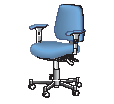|
| Front page | | Contents | | Previous | | Next |
The Product, Functional Unit and Reference Flows in LCA
4. Specific concerns regarding long time horizons
4.1 Products with a long life time
For most physical products, a certain minimum lifetime or durability is an obligatory property, although it may not always be recognised explicitly. For some products, the end-of-life may
typically be determined by conditions in the product environment (e.g. replacement of the surroundings of which the product is a part, developments in fashion or technical capacity), and
in these instances, the role of the lifetime is typically limited to the obligatory minimum. For other products, where the end-of-life is determined by technical properties of the product
itself, the actual lifetime may play an important role as positioning property and may vary a lot among products in the same market segment. In the latter instances, equivalence between
the different products needs to be ensured by adjusting the reference flow following the procedure outlined in section 3.3.
Examples:
For office chairs, their durability is mostly taken for granted, i.e. a certain minimum lifetime (of 7-8 years for computer workstation chairs) is implicitly considered an
obligatory property.The actual difference in lifetime may vary, but does not play a role as a positioning property, since the chairs are often replaced for other reasons than
technical failure (e.g. office refurbishment or technical developments).
For a battery, the lifetime is an important positioning property. In a comparison of two batteries with different lifetimes, it will normally be acceptable to adjust the
reference flow according to their relative lifetime, although issues as stability of the output over time may also be regarded as relevant for some applications.A special
market niche for long-lived batteries may be identified, consisting of consumers that wish to avoid frequent replacements.
Decline in functionality
As products age, their ability to fulfil the original functions may decline. This decline may be expected and/or accepted by the user, and may thus be included in the definition of the
functional unit. When the decline is unacceptable, the product will be replaced.
Cascading to secondary use
After replacement, the product may still be used for other purposes where the expectations are lower (cascading). Equivalence between different products during the secondary use is
typically treated by system expansion.
Office chair example

When the office chair looses essential functionality or falls beyond acceptable aesthetic appearance it may be moved from the office but not discarded entirely. It may be
placed to serve a secondary use in a summerhouse, a workshop or the like. During this secondary use, the office chair can substitute (delay the purchase of) other sitting
support devices, that would not be considered comparable with the office chair in the first place.Therefore, it would not be correct to regard the secondary use as a
prolongation of the life time of the office chair, providing the service described in the functional unit.
Instead, the secondary use should – when significant - be treated by system expansion, crediting the office chair for the other chairs substituted for the time period in
question.
4.2 Studies with a long time horizon
Life cycle studies may well have a long time horizon, even when concerned with short-lived products, as e.g. when studying the possible strategies for a future food supply. Compared to
life cycle studies with a short time horizon (such as those relating to purchase requirements or ecolabelling of products on the existing market), studies with a long time horizon must deal
with the following changing conditions:
- Future markets may have different segmentation than the present because of changes in regulation or administration, or changes in consumer culture. In general, markets tend to
become more transparent and more geographically homogenous and the market access less regulated, but at the same time they become more segmented with regard to quality
requirements. Also, there is a tendency for positioning properties to become obligatory with time (e.g. five wheels on office chairs).
- New competing alternatives may have been introduced on the market, which may therefore have to be included in the study (e.g. new ergonomic features of office chairs based on
current research).
- The conditions used when determining product equivalence may change in time, so that the relative performance of the studied products or the interactions with other systems will be
different in the future situation.
- The decision makers may have a larger influence on future markets and production conditions than on present, thus themselves affecting the above three points, creating new markets,
new product alternatives and/or new conditions for equivalence. The mere existence of a new product alternative, may in itself lead to a change in the consumer expectations, which may
affect the way the functional unit is to be defined. Whether products are regarded as comparable (belonging to the same market segment) and/or as equivalent, may be also be influenced
by the price of the alternatives and by the additional information given along with the products, e.g. information on their environmental performance. Thus, for studies with a long time
horizon, it may be reasonable to compare products, which are not immediately regarded as comparable and/or equivalent, but where it is expected that they will be regarded as
comparable and/or equivalent under specified future conditions of price and information.
Forecasting future market conditions
Methods for forecasting future market conditions are described in the technical report: "Market information in LCA."
| Front page | | Contents | | Previous | | Next | | Top |
Version 1.0 November 2004, © Danish Environmental Protection Agency
|